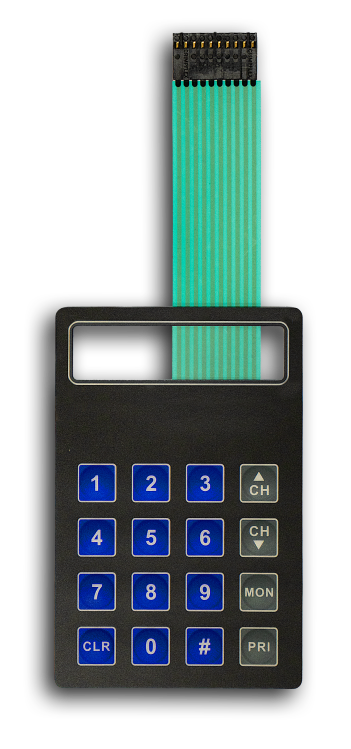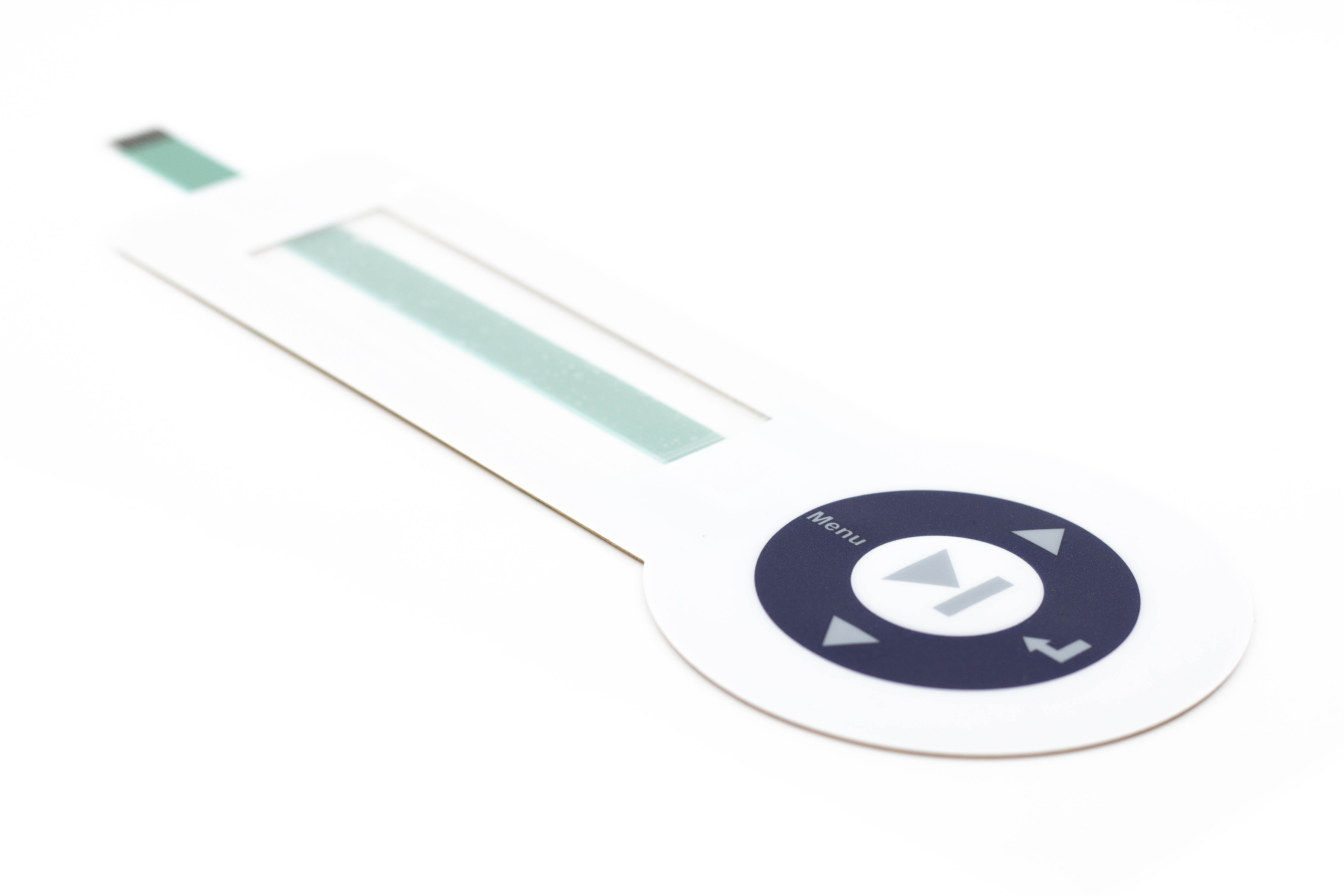Custom Membrane Switches for Specialized Applications: A Deep Dive
Custom Membrane Switches for Specialized Applications: A Deep Dive
Blog Article
Understanding the Value of Membrane Switches in Interface
Membrane switches are important components in the design of effective user interfaces, promoting not just capability yet also boosting aesthetic charm and user interaction. Their special functions, such as resistance to customizable designs and environmental aspects, make them appropriate for a diverse array of applications across multiple sectors. As we check out the future fads and numerous benefits related to Membrane modern technology, it becomes clear that these buttons are extra than simply parts; they stand for a merging of technology and usefulness. The ramifications of this innovation on customer experience are worth taking a look at further.
What Are Membrane Buttons?

The spacer layer, which includes adhesive homes, permits the separation of the circuit layer from the overlay, making sure that the button continues to be in a non-activated state until pushed. When pressure is applied to the overlay, it presses the spacer layer, bridging the space and finishing the circuit in the underlying layer. This style not only lowers the physical space needed for standard mechanical switches however also enhances the longevity of the gadget, as Membrane buttons are generally resistant to dirt, wetness, and other environmental factors.
Typically located in applications ranging from customer electronic devices to clinical devices, Membrane buttons are essential to contemporary technology, supplying a efficient and easy to use interface that lines up with contemporary style needs.
Advantages of Membrane Switches
While various button modern technologies exist, Membrane Switches offer distinctive benefits that make them specifically desirable in various applications. One of the main advantages of Membrane switches is their compact style, which enables for space-saving executions in gadgets where property is restricted. Their slim account not only improves visual allure however also facilitates lightweight construction.
One more significant benefit is their resistance to ecological aspects. Membrane buttons are usually sealed versus dampness, dirt, and contaminants, making them suitable for use popular settings, such as medical tools and industrial tools. This durability prolongs the life expectancy of the button, reducing maintenance prices and enhancing integrity.
Additionally, Membrane switches can be customized to fulfill particular style demands, including unique graphics and shades that boost user communication. Their tactile feedback choices can likewise be customized to supply a gratifying customer experience. In addition, Membrane buttons are cost-efficient, specifically in high-volume applications, as they can be created efficiently.
Applications in Different Industries
In the consumer electronic devices sector, Membrane switches prevail in tools such as microwaves, washing makers, and remote controls. Their responsive responses and visual choices boost customer experience while providing a sleek, modern-day look. Additionally, auto producers utilize Membrane switches in dashboard controls and infomercial systems, where room is limited, and user interaction is important.
In addition, the industrial field leverages Membrane switches in control panels for equipment and devices, permitting for instinctive procedure in commonly severe environments. Their resistance to chemicals and moisture ensures longevity and integrity in these applications. On the whole, the adaptability of Membrane Switches contributes considerably to their widespread usage, making them crucial in different technical domain names.
Style Considerations for Membrane Buttons

When making Membrane buttons, several vital factors to consider have to be taken into account to guarantee optimal capability and customer experience. First of all, the selection of products is vital; picking durable, high-grade substrates can boost the switch's long life and resistance to ecological elements such as moisture and temperature changes.
Second of all, the layout of the graphic overlay should go to this web-site prioritize clearness discover this info here and ease of usage. Symbols and text must be understandable, and the design must help with user-friendly communication (membrane switches). Furthermore, tactile feedback is necessary; including a responsive dome or various other mechanisms can improve the user experience by providing physical confirmation of activation
An additional important element is the button's electrical efficiency. Designers have to guarantee that the conductive traces are effectively designed to reduce resistance and stay clear of signal disturbance. This involves evaluating the required actuation force and making certain compatibility with the electronic components they will certainly user interface with.

Future Patterns in Membrane Technology
As technology remains to advance, Membrane switches are positioned to evolve considerably, driven by developments in products and producing techniques. One emerging fad is the unification of sophisticated products, such as conductive inks and versatile substratums, which enhance resilience and minimize the overall weight of Membrane switches. These materials not only boost the responsive feedback however additionally permit for the design of switches that can endure harsher ecological conditions.
Furthermore, the combination of Clicking Here touch-sensitive modern technologies is changing traditional Membrane Switches into more interactive individual interfaces. Capacitive touch sensors embedded within Membrane switch panels can provide a much more responsive and instinctive customer experience, aligning with the growing demand for streamlined, contemporary layouts in consumer electronics.
Furthermore, innovations in printing methods, such as electronic and 3D printing, enable rapid prototyping and modification of Membrane switches. This flexibility enables manufacturers to react a lot more quickly to market demands and consumer preferences.
Lastly, sustainability is becoming a considerable emphasis, with makers exploring green materials and procedures. As these fads unravel, the future of Membrane technology promises improved functionality, visual charm, and ecological duty, solidifying their function in sophisticated customer interfaces throughout numerous sectors.
Conclusion
To conclude, Membrane Switches stand for an important part in the design of customer interfaces, integrating functionality with visual flexibility. Their advantages, consisting of durability and resistance to ecological variables, make them suitable for varied applications across different sectors. In addition, thoughtful style considerations boost individual interaction and experience. As developments in innovation proceed, the advancement of Membrane switches is anticipated to more refine interface, driving advancement and boosting functionality in a significantly intricate technological landscape.
Membrane switches are integral elements in the design of reliable user interfaces, helping with not just capability yet additionally boosting visual allure and individual communication.Membrane Switches serve as an essential component in different user interfaces, promoting a seamless interaction in between customers and digital devices.While numerous switch innovations exist, Membrane Switches deal unique advantages that make them particularly preferable in various applications.Additionally, Membrane buttons can be customized to satisfy specific layout needs, incorporating one-of-a-kind graphics and shades that improve user interaction.In verdict, Membrane Switches stand for a crucial element in the design of individual interfaces, incorporating functionality with aesthetic adaptability.
Report this page